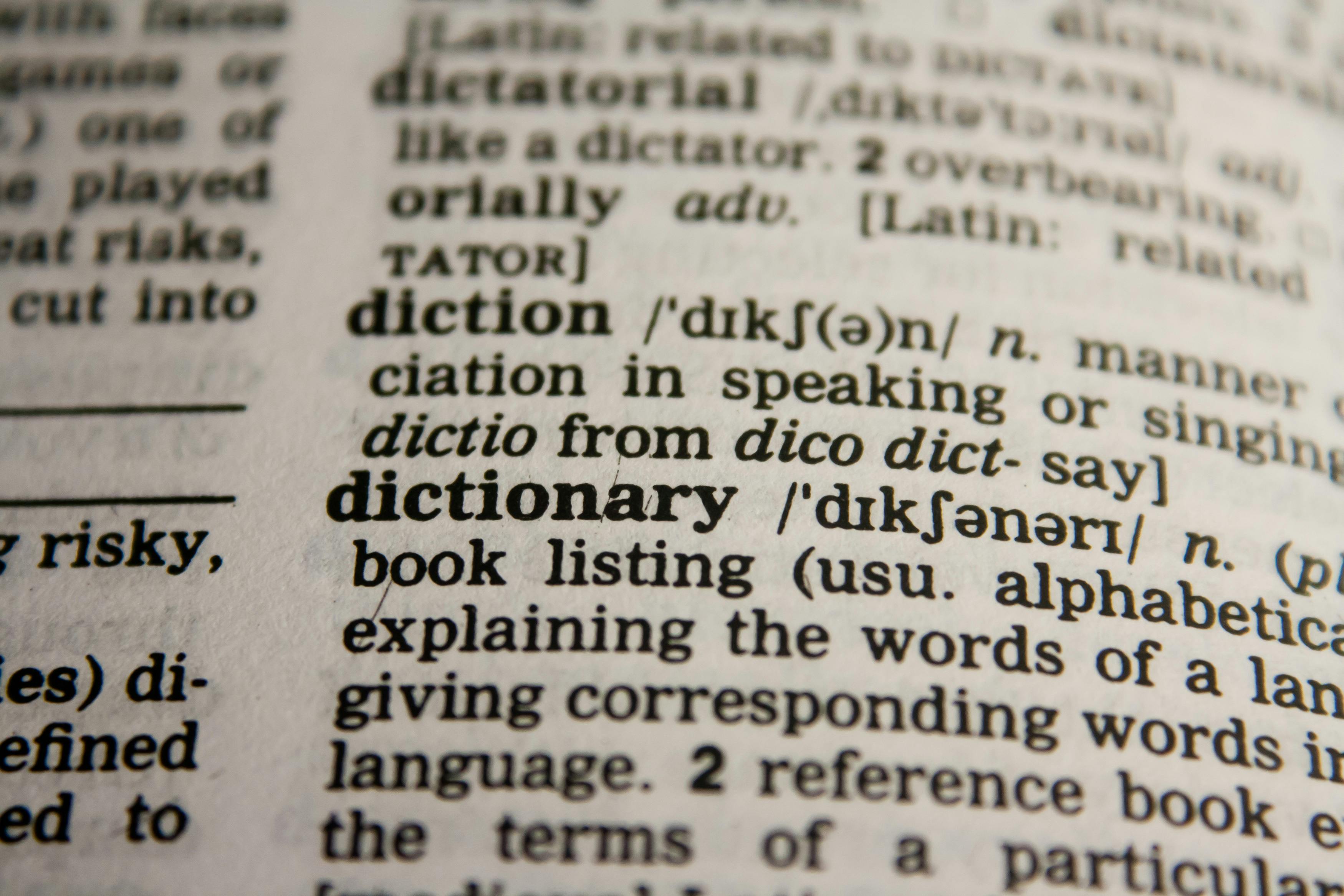Introduction
Mastering Mandarin is no mean feat, with its rich tapestry of tonal nuances. Of the many challenges that learners face, understanding Mandarin's Neutral Tone often proves to be particularly perplexing. This elusive 'fifth tone', as it is often referred to, is a crucial element in achieving fluency and authenticity in your Mandarin pronunciation. Unlike the four basic tones of Mandarin, the neutral tone is a bit of a chameleon, its exact pitch influenced by the tone that precedes it. This unique feature, coupled with its subtle, de-emphasized quality, can make it seem like an enigma to the untrained ear. Yet, with a comprehensive guide to the neutral tone Chinese, you can unravel this mystery and take a significant stride towards fluency in Mandarin.
In this guide, we will delve into the intricacies of the neutral tone, breaking down its definition, pronunciation, and its role in the Mandarin language. We will also explore how its usage varies across different regions of the Chinese-speaking world. So whether you're a beginner embarking on your Mandarin learning journey, or a seasoned learner seeking to refine your pronunciation, this guide promises to be an invaluable resource. Let's dive in!

Understanding Tones in Mandarin
Before we dive into the specifics of the neutral tone, let's first take a brief detour to grasp the concept of tones in Mandarin. Tones are like the musical notes of language, giving Mandarin Chinese its unique melodic character. They play a pivotal role in the language, altering the meaning of a word based on the 'pitch contour' of the sound.
Mandarin uses four primary tones: high (first tone), rising (second tone), low (third tone), and falling (fourth tone). If you think of these tones as separate musical notes, you'll start to see Mandarin as a language that sings its meanings. For instance, changing a high tone to a falling tone, such as mā (meaning "mother") to mà (meaning "to scold"), completely transforms the word's meaning — quite the linguistic twist!
However, there's more to the story. Mandarin also has a mysterious 'fifth tone' — the neutral tone. While it doesn't carry the same lexical weight as the four primary tones, it plays a significant role in the rhythm and intonation of the language. But is it truly a fifth tone, or does it represent something else entirely?
As we'll see, understanding the nature of the neutral tone is a crucial step toward mastering Mandarin pronunciation. Let's move on to demystify this intriguing aspect of the language.
The Concept of Neutral Tone in Mandarin
Prepare to explore a unique aspect of the Mandarin language- the neutral tone. This is not just another tone to add to your list, but rather a fascinating linguistic concept that brings a certain fluidity and sophistication to speech.
The Neutral Tone as a "Light" or "De-emphasized" Tone
The neutral tone, also known as "轻声" (qīngshēng), meaning "light tone," is not a tone to be heavily stressed or emphasized. If we were to compare Mandarin to a symphony orchestra, the neutral tone would be the soft violins, not the booming timpani. It doesn't command the same amount of stress as the other tones. In fact, it should be a bit shorter than the other tones, quickly blending in with the sounds that precede and follow it.
The Relative Nature of the Neutral Tone
Unlike the four main tones, which have distinct and absolute pitches, the neutral tone is more of a chameleon. Its pitch is not fixed but depends on the tone that came before it. This makes it a bit of a moving target for learners and why it is often not included in pinyin charts. There is no standalone neutral tone; it takes on different forms depending on what it follows. This relativity means that while you could memorize the exact pitch of the neutral tone after each of the four main tones, it's not the most effective strategy for beginners. The golden rule? Keep it short and keep it light.
The Influence of Preceding Tones on the Neutral Tone
The beauty of the neutral tone lies in its adaptability. It changes its pitch to harmonize with the preceding tone. After a high (first) tone, the neutral tone is lower, and likewise after a rising (second) tone. After a low (third) tone, the neutral tone goes higher, contrasting with the low tone that came before it. Following a falling (fourth) tone, the neutral tone remains low. So, it's not so much about hitting an exact pitch, but rather about creating a dynamic interplay between the tones that makes Mandarin such a melodious and rhythmic language.
In the next section, we'll delve deeper into how to pronounce the neutral tone in Mandarin, helping you to fine-tune your pronunciation and bring your language skills to the next level.

Pronouncing the Neutral Tone in Mandarin
Just as a symphony relies on the harmonious interplay of various instruments, the rhythmic beauty of Mandarin hinges on the dynamic interaction of its tones. One tone that plays a crucial role, yet often flies under the radar, is the neutral tone.
The Role of Intonation in Pronouncing the Neutral Tone
In Mandarin, the neutral tone, also known as 轻声 (qīngshēng), is a "light" or "de-emphasized" tone. It's not stressed like the other four tones and is often shorter in duration. Think of it as the subdued background music that allows the main melody to shine. The neutral tone doesn't exist in isolation; its exact pitch depends on the tone that precedes it. This means that mastering the neutral tone is less about memorizing its pitch and more about understanding its relative nature and adjusting your pronunciation accordingly.
Common Examples of Words with the Neutral Tone
For the neutral tone to make sense, context is key. It's most commonly found in two-syllable words, where the second syllable is pronounced in the neutral tone. Some examples include 妈妈 (māma, "mother"), 朋友 (péngyou, "friend"), and 聪明 (cōngming, "clever"). In each of these words, you'll notice that the second syllable is lighter and less stressed than the first.
Neutral Tone in Sentence-final Particles
Another common area where the neutral tone comes into play is in sentence-final particles like 吗 (ma), 呢 (ne), and 吧 (ba). These particles are always pronounced in the neutral tone, serving to soften the overall intonation of the sentence. The exact pitch of these particles is influenced by the preceding syllable, adding to the melodious flow of Mandarin.
Remember, the neutral tone is not about volume or emphasis, but about the nuanced interplay of tones. Like a subtle pinch of spice in a well-cooked dish, it adds a layer of depth and complexity to the language that makes Mandarin so fascinating to learn and speak. So, don't shy away from the neutral tone; embrace it as a vital part of your Mandarin learning journey.
Writing and Identifying Neutral Tones in Mandarin
Unfurling the mystery of Mandarin neutral tones doesn't stop at pronunciation. The next step lies in understanding how they are represented in writing and how to identify them in texts.
How Neutral Tones are Represented in Writing
The neutral tone in Mandarin is typically indicated in written form in several ways. The most common method is by not placing a tone mark above the main vowel. For example, in the word "bēizi", where "zi" is in the neutral tone, no tone mark is placed above "i".
Alternatively, a dot can be placed before the syllable to indicate the neutral tone, such as "bē·zi". Another method is to represent the neutral tone with the number five or zero, as in "bei1zi5" or "bei1zi0".
Each of these methods serves the same purpose - to distinguish syllables that are pronounced with a neutral tone from those that carry one of the four full tones.
Tips for Identifying Neutral Tones in Texts
Identifying the neutral tone in Mandarin texts can be a bit tricky, especially for beginners. However, there are some common patterns and markers that can help.
Firstly, particles such as 了, 吗, and 的 often carry the neutral tone. These particles are rarely pronounced on their own, and their pitch is determined by their surroundings. Take, for example, the sentence "tīng bu dǒng" (听不懂, “I don’t understand”). Here, the particle "bu" is pronounced in a neutral tone.
Another tip is to look for suffixes like 们, 子, or 头, which typically have the neutral tone. For instance, in the word "zhuōzi" (桌子, “table”), the suffix "zi" is in the neutral tone. However, remember that these characters don't always carry a neutral tone. When not used as a suffix, they can have a full tone, as in "zǐnǚ" (子女, “sons and daughters; children”).
Finally, keep in mind that listening to native speakers is one of the best ways to familiarize yourself with the neutral tone. This will help you understand how the neutral tone sounds in different contexts and improve your ability to identify it in spoken and written Mandarin.
Mastering the neutral tone is a vital part of achieving fluency in Mandarin. With consistent practice and exposure, you'll soon be able to discern and correctly use the neutral tone, enriching your Mandarin speaking and writing abilities.
The Use of Neutral Tone in Mandarin
Mastering Mandarin involves not only understanding the concept of the neutral tone but also knowing when and how to use it in context. Let's delve into the specifics of its application.
When to Use the Neutral Tone
The neutral tone primarily surfaces at the end of words or between syllables but never at the beginning of words. The lion's share of Mandarin words are two-syllable words, making the most common scenario for neutral tone usage a two-syllable word with the second syllable bearing the neutral tone.
Particles, often carrying the neutral tone, include 了, 吗 and 的. They're typically not pronounced on their own but instead, their pitch is influenced by the surrounding words. For instance, in phrases like tīng bu dǒng (听不懂, “I don’t understand”) or kàn de jiàn (看得见, “can see (something)”).
The Impact of Neutral Tone on Meaning and Context
Beyond merely being a feature of pronunciation, the neutral tone in Mandarin also plays a pivotal role in conveying meaning and context. Mandarin suffixes like 们, 子, or 头 often carry the neutral tone. For example, in the word 桌子 (zhuōzi, “table”), the noun marker 子 has a neutral tone. However, the same character 子, when not used as a suffix, carries a full tone, as in 子女 (zǐnǚ, “sons and daughters; children”).
The use of neutral tone can subtly change the meaning of phrases and sentences, making it a vital aspect of Mandarin communication. For instance, the word 豆腐 (dòufu, “tofu”) is often pronounced with a neutral tone on the final syllable, effectively shortening it to dòuf.
Understanding the neutral tone's use in Mandarin is not just about mastering pronunciation—it's about grasping the nuances that make Mandarin a rich and expressive language. As you continue your language learning journey, remember to be attentive to the neutral tone, and before you know it, you'll be communicating with the ease and finesse of a native speaker.

Regional Variations in Neutral Tone Usage
Just like accents in English, Mandarin Chinese also exhibits regional variations, and the neutral tone is no exception. Understanding these variations is essential to mastering Mandarin, as it can significantly impact the way you perceive and interpret spoken language.
Differences in Neutral Tone Usage Across Chinese-speaking Regions
The neutral tone usage varies across different parts of the Chinese-speaking world. For instance, the neutral tone is more commonly employed in northern dialects, such as in Beijing, compared to southern dialects like in Taiwan. This difference is even reflected in the standard language, leading to variations in pronunciation for certain words.
In the vast and diverse landscape of Chinese language, the neutral tone plays a different role in Beijing, Shanghai, and Taiwan. In Beijing, the neutral tone is emphasized quite a bit, while in Taiwan, you might not hear it as frequently in natural speech. As for Shanghai, it falls somewhere in between, displaying a mix of northern and southern Mandarin pronunciation styles.
Case Study: Neutral Tone Variation in the Word 喜欢
Let's take a look at a practical example to illustrate this point - the word 喜欢, which translates to "like" in English. In Mainland China (Beijing), the standard pronunciation is "xǐhuan," with a clear neutral tone on "huan". However, in Taiwan, the same word is pronounced as "xǐhuān," with a full tone on "huan". In Shanghai, you might hear both "xǐhuan" and "xǐhuān," reflecting the city's unique linguistic blend.
It's essential to understand these regional variations, as they can significantly influence the way you comprehend and communicate in Mandarin. Remember, language is not a static entity; it's a living, breathing body that changes and adapts based on the region, culture, and the people who speak it. And as a language learner, adapting to these variations is a crucial part of your Mandarin learning journey.
In the end, the neutral tone, like other aspects of Mandarin, comes alive in the daily interactions and conversations of people. By embracing these regional variations, you can enhance your understanding of Mandarin and connect more authentically with its speakers.
Conclusion
Mastering Mandarin is a journey filled with intricate tones and nuanced pronunciations. The neutral tone, often referred to as the fifth tone, is an integral aspect of this journey. Its relative nature and its interplay with preceding tones add a unique layer of complexity to Mandarin pronunciation. As we've discussed, the neutral tone is "light" or "de-emphasized", with its exact pitch determined by the tone that came before it.
Through this guide, we have explored how the neutral tone is used in Mandarin, its representation in writing, and how to identify it in texts. We've also delved into the regional variations in neutral tone usage across Chinese-speaking regions. For instance, the neutral tone is more prevalent in Beijing compared to Taiwan, with a word like 喜欢 pronounced differently in each region.
However, the key to truly understanding and mastering the neutral tone lies beyond the theory. It lies in consistent practice, continuous listening, and engaging in conversations with native Mandarin speakers. It lies in immersing yourself in the rich tapestry of Mandarin language and culture.
Remember, learning Mandarin, like any other language, is not just about acquiring knowledge, but also about applying this knowledge. Writing summaries of what you've learned, using mind mapping, or employing spaced repetition flashcards can help reinforce your understanding and recall of the neutral tone and other aspects of Mandarin.
Continue to explore, learn, and enjoy the process. Your Mandarin proficiency is not just a function of the information you consume, but rather how you engage with and apply this information. The journey to mastering Mandarin is indeed a fascinating one. With perseverance, practice, and the right learning tools, the neutral tone and all its nuances will become an integral part of your Mandarin skillset.
Sources and Further Reading
Mastering the neutral tone in Mandarin can open up a new world of understanding and fluency in the language. However, it can be a challenging feat, especially for beginners. To supplement your learning and deepen your understanding, there are many resources available that can prove to be a great help.
Recommended Websites for Further Study
One of the best places to start is the Chinese Pronunciation Wiki. This website provides comprehensive information on the neutral tone, including its characteristics, pronunciation tips, and examples of words with the neutral tone. For a more in-depth view on the neutral tone in real speech, Chinese Linguist Jinxiao Song offers insightful content.
Podcasts for Improving Neutral Tone Pronunciation
Listening to a language is one of the best ways to improve pronunciation and comprehension. Podcasts offer a convenient and effective way to get that much-needed aural exposure. ChinesePod has an episode dedicated to the neutral tone, which can be a great addition to your Mandarin learning resources.
Videos for Visual Learning of Neutral Tone
For those who prefer visual learning, videos can be a great tool. On YouTube, Ms Zou's Chinese Class provides a detailed explanation of the neutral tone in Mandarin. The video is in Chinese, so it offers an excellent opportunity to practice listening skills as well.
In conclusion, mastering the neutral tone in Mandarin Chinese is a crucial step in achieving fluency. With the right resources and consistent practice, you can conquer this aspect of Mandarin pronunciation and enhance your overall language skills. So, dive into these resources and start practicing today!


